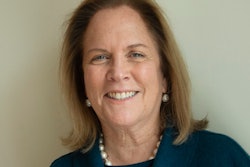Growing up in the Bronx, I was accustomed to identifying as Puerto Rican. I was surrounded by communities of color and went to school where the student body was predominantly Puerto Rican, Dominican, Mexican, and Black. I don’t recall hearing or using the term “Latino” much until I was in college.
During my freshman year, I vividly remember looking through the course catalog – a massive depository that resembled a phone book in which all the classes being offered were listed – to see if there were any courses about Puerto Ricans. For the most part, I saw only classes about the broader category of “Latinos” offered through a Latino/a Studies Program.
Having to adjust to an overwhelmingly White environment where the majority of my peers did not qualify for financial aid, it was really easy to feel isolated—especially in the classroom. Outside of class, I surrounded myself with the friends I made during the “Introduction to Cornell” program I was a part of. These friends were mostly underrepresented students from around the country who were either low-income or were flagged to benefit from this summer bridge program.
However, during my first fall and spring semesters, the classes were larger and Whiter. When you are in a “Social Inequality” class where the White professor just moves on from problematic comments made by White students about the disparities of wealth among non-White communities, or where the professors themselves call on the very few students in the class who may identify as being part of a “minority” group to speak to the issues affecting their communities, it becomes more difficult to feel like you belong. Experiencing these things constantly, I began to appreciate the term “Latino.”
There weren’t many Puerto Ricans in my college town, Ithaca, N.Y. As I looked for “my people” on Cornell’s campus, I learned more about myself through the interactions I had with other Latinos. I became an out-of-house resident of the Latino Living Center, a residence hall created to celebrate and acknowledge Latino culture and Latinidad at Cornell.
I also frequently visited the Latino/a Studies Program office. Although most major, minor, or academic program offices at Cornell were mostly administrative spaces to find information about the academic program and get advising, this one in particular was more of a student support space — with a welcoming lounge area, beautiful Latino artwork, a computer lab and friendly staff and faculty who frequently occupied the student spaces to check in on all of us. The older students who spent most of their time in these spaces encouraged me to get the Latino/a studies minor and become involved with the Latino-centered student organizations.
Listening to these students and becoming a regular at these spaces changed my life and helped me thrive at Cornell. The classes within the program introduced me to a history that I was deprived of in my social studies and history classes growing up, although I was unaware of it at the time.















